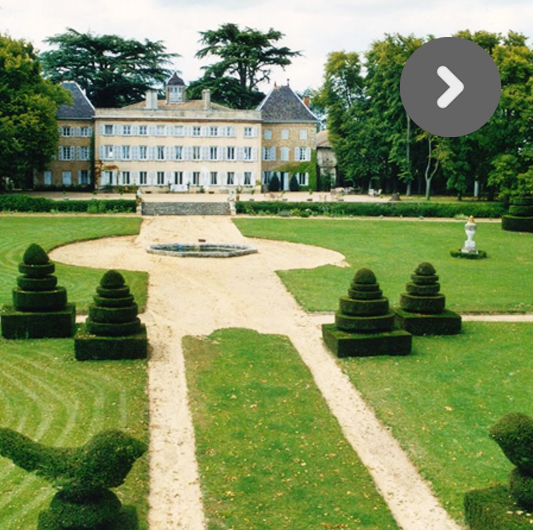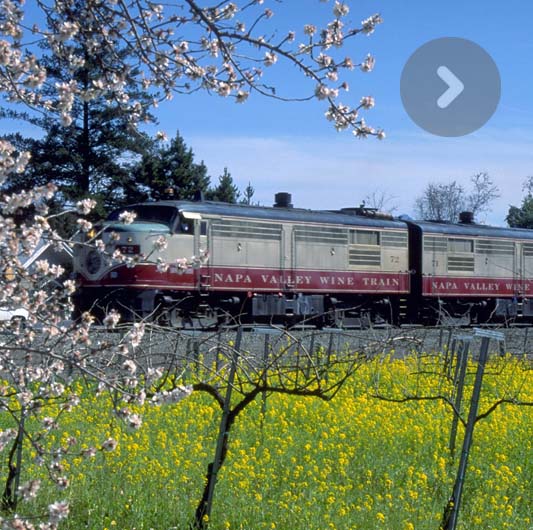THE GRAVES
The Graves wines are the only ones to be named after their soil ‘The Grabas de bourdeux’ (in old French). Putting into perspective the great importance of soil for producing good quality wine. Three controlled appellations: the AOC Graves and Pessac-Léognan produce both red and dry white wines, the AOC Graves Supérieur for sweet white wines. A ranking set up in 1953 and added to in 1959, which has distinguished 16 classified blends in both red and white.
The variety of vine mostly used to make red wine are the cabernet sauvignon, merlot and cabernet –franc and for white wine the sauvignon sémillon and muscadelle are used. www.bordeaux-graves-sauternes.com
Pessac
Situated on the left bank of the river Garonne, just outside Bordeaux, Pessac is the entry point into the territory of the AOC Graves and Graves Supérieur, AOC Pesac-Léognan, and further south the AOC Sauternes.
La Cité Frugès. Built by Le Corbusier, it shows Pessac’s interest in modern art and social issues as from the 1920’s.
La Maison Frugès-Le Corbusier. The ‘skyscraper’ house was acquired by the town with the intention of an exhibition place. Open to visits. 4, rue Le Corbusier. Tel.: +33 5 56 36 56 46
Château Pape Clément. Seven centuries of history and a rare wine. In the fourteenth century, the château got its name from Pope Clément V. The new pope and owner of the château is called Bernard Magrez, a master, a man to be reckoned with in the world of wine and art .The château Pape Clément is one of the oldest appellations in Bordeaux Grand Cru Classé. www.pape-clement.com
![]()
Relais de Compostelle. In a fourteenth century dwelling one finds traditional gourmet fare with an accent on local produce and fish. A fire roars in the chimney in winter and the park opens up in summer for lunch. Route de Bayonne. Tel.: +33 5 56 84 13 06

Léognan
Château Haut-Bailly. Classified blend and nineteenth century house. A manuscript shows that vines already existed in the year 146 where the château now stands. In the eighteenth century, the vineyards are put under the control of Thomas Barton, a wine merchant of Irish origin. The “New French Claret” is much appreciated on the other side of the Channel and is widely exported. Nowadays, thirty hectares of vines in one plot surround the château on the graves hillsides producing marvelous wine. The 2010 La Parde du Haut Bailly vintage,not to be drunk before 2016, is a very promising wine, developing hints of chocolate, blackcurrant and tobacco, according to the wine review “Wine Cellar insider”. Private visits by appointment. www.chateau-haut-bailly.com
Château la Louvière. An outstanding residence.Classified historical monument in 1991. Since 1398, the Guilloche family presides over the estate’s destiny. One of their heirs, Madame de Roquetaillade, sold the property in 1620, which then returned to the ownership of the Chartres monks of Our Lady of Mercy. Taking excellent care of the vines, it turned out that the La Louvière wine produced was one of the best in the kingdom. In the eighteenth century, upon the request of its owner, Jean Baptiste Mreilhac, the château was embellished in pure neo-classical style by the architect François Lhote. In 1965, André Lurton, a confirmed wine maker, vinifies and produces an AOC Pessac–Léognan at the Louvière, in red and white, a full bodied, yet delicate wine, perfumed with ripe fruit and hints of violets and leather. Excellent wines to put down. Visits and guided tours from Monday to Friday by appointment. Tel.: +33 5 56 64 75 87 www.andrelurton.com
Chevalier’s Vineyard
Some exceptional Graves Grands Crus Classés wines are produced on this venerable estate with a timelessly modern wine store. The estate is such a secret garden in the midst of woods and vineyards from where the vat emerges. Made of stone, metal and glass, the circular vat fits in to the architecture of the eighteenth century property. Olivier Bernard, a knight of the vine, feels in osmosis with his estate and his vineyard, living amidst it all and entertaining the greatest oenologists and visitors the world over with such elegance. Tasting his vintages, one discovers extraordinarily complex, thoroughbred wines that are velvety, rich in aromas, tannic, with a long finish. The 2010 Domaine de Chevalier Grand Cru Classé is a full bodied, yet tender wine with hints of pear and freshness. As for the Domaine Chevalier 1920, a rarity, it has kept all its aromas intact and expresses notes of smoked China tea. A sheet moment of happiness! Visits by appointment. Tel: +33 5 56 64 16 16 www.domainedechevalier.com
La Brède
Château de la Brède. Built in 1306, over-hauled in the Renaissance, with moats and a draw-bridge, the château de la Brède has kept its fortress look. It was here that, in 1689, Charles Louis de Secondat, Baron de la Brède was born – he is better known under the name of Montesquieu. A writer and philosopher, Montesquieu would often stay at his château, as it was where he found the tranquility necessary to his writing and from where he wrote part of his work entitled ‘L’Esprit des Lois’. One of his descendants, the Countess Jacqueline de Chabannes, lived at La Brède until her death in 2004. She wished the estate to remain open to the public. A visit to this château enables one to enjoy the heritage of such a famous writer, so wonderfully conserved. Tel.: +33 5 56 78 47 72 www.chateaudelabrede.com

Château Magneau. Situated in the heart of Graves country, this old property has been run by a long line of wine makers since the time of Henry IV. The Ardurats family in its entirety splits the work on the vines, the vinification and the reception between them. The 40 hectares of vines are cultivated in accordance to the ‘Terra Vitis’ principles, and this at each stage of the wine production. The Julien Blanc blend is half sauvignon, half sémillon, with aromas of peach, exotic fruit, a fat and lively wine, shortlisted by the Hachette Wine Guide. The 2006 vintage won Gold in the Terra Vitis awards. The wine stores are open to the public from Monday to Friday and by appointment. Tel.: +33 5 56 20 20 57 www.chateau-magneau.com
![]()
La Table de Montesquieu. Christophe Girardot’s cooking – a Michelin starred chef – is unparalleled, refined, inventive, tasty and colourful. Pleasure and surprise awaits the palate in front of a dish concocted by Christophe. Rock urchins brought together with truffle. Cheek and Ox tail from Bazas are prepared as pot au feu and caviar from the Aquitaine meets the rare Breton knife. One marvels, tastes and is amazed by this successful alchemy. Place St-Jean d’Estampe. Tel.: +33 5 56 78 52 91









